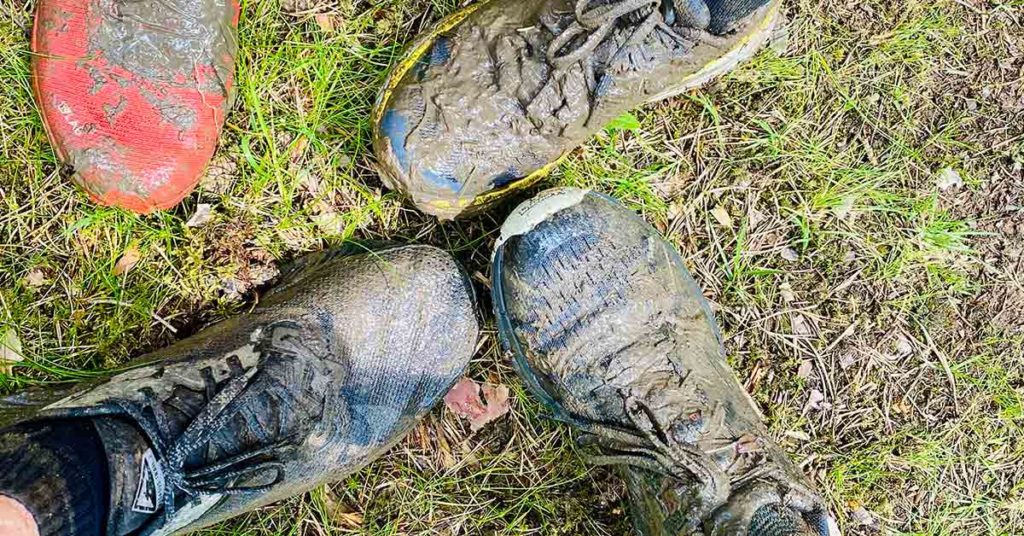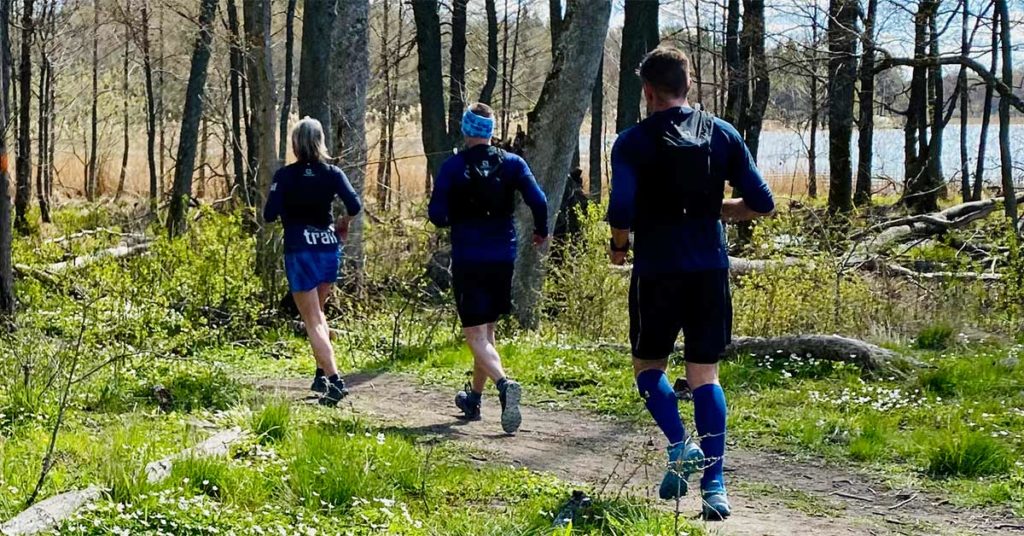Running is one of the few sports that go on regardless, rain or shine. No matter what the weather, runners are out there grinding and getting their miles in. Things can get tricky; however, when the weather is factored in, a good runner should be properly prepared for every situation.
Trail running is already a more challenging and daring calorie activity. When trail running, you must already be aware of rocks, roots, ruts, and branches, but you must take extra precautions when adding wind and rain into the mix. Above all, there is the risk of slipping to take into account.
Even though there are many things to consider before trail running in the rain, it can be enjoyable and exciting because of the extra challenges that come with running in the rain.
What should I wear during my run?
Before you step outside for your run, you must check your gear. Your gear can make or break your chance at getting a good run-in.
When preparing for rain, make sure your shoes are meant for trail running. Regular sneakers will not have the proper support, stability, or traction you need to take on the rugged terrain of most trails, as well as the elements. If you can get away with generic sneakers for trail running in dry conditions, you will find out very quickly that they will not work in the rain as they will slip and slide everywhere.
Try and wear something sweat-wicking or waterproof for socks, so they do not hold onto the water. When going for runs in the rain, make sure to layer up. Think light but warm; the last thing you need is to give yourself hypothermia by not properly dressing.
In warmer months, make sure to wear at least a jacket with a hood to protect your ears from the wind and keep the rain out of your face. A baseball cap also helps keep the rain out of your eyes. Just keep in mind when dressing for your rainy day run, you will get very wet, both with sweat and precipitation, and you will also get very muddy.
Try not to wear any clothing that will hold onto the water and sweat, like cotton. It is also wise to avoid wearing light colors since they tend to be very thin and see-through when wet and will stain easier from mud. However, try and have something fluorescent or brightly colored over top of everything so you can still be seen.
Pay attention to puddles and mud
Once you are out on the trail, be aware of puddles and flooding. Trails will flood very easily and, if possible, avoid running through flooded areas. You can never know if what you are running into is an inch of water or a foot of water.
It is also a rule of thumb not to fully submerge your feet; this is not good for you, nor your shoes, even if they are technical ‘waterproof.’ While you can be a little more laid back with puddles, you must still be paying attention. Since trails tend to be filled with ruts and you can’t tell how deep the puddle is, try your best to pay attention and judge wisely.
When starting trail running, you must get well acquainted with mud when it rains. Mud tends to be a significant factor when trail running in the rain. Mud can mess with your traction and make it hard to get your feet up. Mud can also be deep; however, you won’t know until you sick your foot in. Again, judge wisely when it comes to mud; if you see that someone came through before you and their footprints are pretty deep, try your best to avoid that part. Take mud slowly; there is no sprinting through mud, no matter how fast you are or want to go.
Wind and falling branches
Another thing to keep in mind when running in the rain, especially in wooded areas, is wind and potential falling branches. When the wind picks up, even in light rain, dead branches and small trees can be blown down onto you and onto your path. Be paying attention when the wind picks up. Wind can be bad for visibility in the rain as it can cause the rain to go into your eyes.
Especially if you are a runner that is new to trail running, it is wise to take it slow when there is rain. Slowing your pace on rainy days will give you more time to assess your footing and surroundings. By no means should you take a light day every time it rains, but if you are running on a rainy day, take the right precautions by watching your footing, watching whatever the wind blows in your way, and keeping in mind that the rain can reduce your visibility as well.
Since you will be going slower while trail running in the rain, try and enjoy the experience as well. Rainy days don’t have to be stressful!
Things to keep in mind after the run
When you arrive home or go back to your car after trail running in the rain, keep in mind that you will be drenched, muddy, and in desperate need of hydration and nourishment. If you drive to your trail, make sure to bring towels and possibly a change of clothes and shoes with you.
Trail running generally depletes calories and dehydrates you quickly, so it is smart to hydrate and eat a filling, healthy, calorie-dense snack when you get back home or to your car.
Make sure to get changed out of wet clothing as soon as possible. You can get hypothermia if you have completely wet clothing for too long, even in summer.
Don’t forget to clean your trail sneakers because they will most likely be caked in mud, and let them dry. It sometimes helps to take out your shoes’ insoles and put newspaper in your sneakers to soak up water, so they dry all the way.
Conclusion
Trail running in the rain can be a great way to keep your endurance up, but it also comes with unique hazards. It’s essential to take precautions before you head out on the trail so that you don’t come back home cold and wet!
We’ve outlined some of our best tips for staying safe while trail running during rainy weather below:
- Wear bright clothing or fluorescent colors over top of everything; this will ensure that drivers see you.
- Rocks, stones, and roots become very slippery when it rains. Look extra carefully where you put your feet.
- Keep an eye out for fallen branches.
- Watch where you step when trail running in the rain; puddles are everywhere and may not always be visible until they’re too deep.
While challenging at times, trail running in the rain can be amazing and fun. Add a little rain to your daily trail run, and it turns into an adventure. But when you find yourself trail running on a rainy day, make sure to gear up, pay attention, and stay safe. Happy running!




